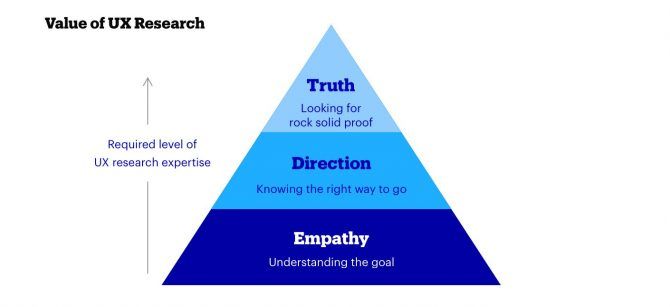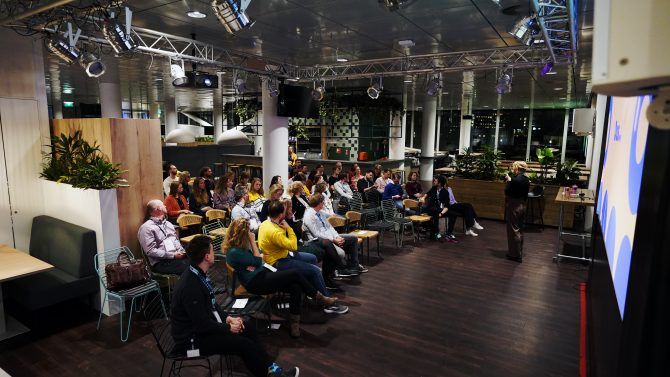Everybody is a UX Researcher
You are a UX researcher, and you are a UX researcher… Everybody is a UX researcher!
That’s kind of our approach to user centered design at bol.com. Does it make the whole process more customer minded? Definitely. Does that improve research quality? Maybe not. Is it scary? Sometimes, but pizza’s and buddies help. And in our experience, it’s worth every bit of effort.
We hosted the UX Insight’s meetup at our office in Utrecht in January. We started with food, followed by a presentation and finished off the evening with a workshop and drinks. We had a great evening! This is the recap.

Why do we need everybody to be a UX researcher?
Back in the day, we used to have one or two dedicated UX researchers. At the end of a project they would validate the outcome and look for improvements. That was enough. Now we need much more because something changed in the process: we work agile with Lean UX.
Working Lean results in a way higher research frequency. Because you divide your process in little steps. And after every step you’ll want to turn to the user: are we still going the right direction? This way you can easily change direction in time. And we won’t find ourselves at the end of a long journey that led the wrong way. Instead of one moment to do research, we continually involve our customer in what we do.

Why not hire lots of researchers?
Hiring extra researchers is one solution to do more research. But there is something else: we want everyone in our team to be customer minded. That’s why we also chose to turn more employees into ‘researcher on the side’.
The value of ‘research by everyone’ is not the same as expert research. Importantly we distinguish three levels of value UX research can provide:
- ‘Truth’, or striving for statistically valid proof for your hypotheses. You’ll need a clear, systematic approach to reach this. And… you probably need to be an expert.
- ‘Direction’. Sometimes you don’t need to be a 100% sure, but just sure enough to know you’re on the right path to choose between the left or right turn. Still you want your methods to be solid, but this is also something an experienced UX designer can do.
- ‘Empathy’. A no-brainer for UX-ers, but not for everyone. Creating something with the customer in mind. And not just thinking about ‘a user’ but really understanding their needs and issues. If all your team members have this ‘empathy’, it will be easier to keep the project on the right track. And here is where everybody comes in: you don’t need to be an expert to reach this level.

So besides doing expert research, continuously doing more basic research helps to spread the customer-mindedness and lets everyone join in.
Research by everybody: where to start?
Labeling everyone a researcher won’t instantly get you there. Our approach is to let newbies watch first, then participate and finally do it themselves. When someone (business, IT, anyone) has an idea or issue we encourage them to think “Maybe someone at UX can test this with some users!” This mindset can grow to: “Maybe we can test this together with UX!” With this they learn the basic skills and confidence to eventually initiate and perform the basics by themselves. Some ideas that worked for us:
- Find your buddies If you’re lucky there are people around that are interested already. Don’t do this on your own. No matter their job, background or skill level: collaborate. Form a guild to exchange ideas, inspiration and help each other when needed.
- Create awareness. UX research has plenty of options: from focus groups to moderated usability tests, from card sorting to interviews. And all have different value. You surely have thought about this already, but do your colleagues know? Give workshops or create a ‘research-menu’ with all the types of research that you (could) do together.
- Make it accessible and fun. Can I do user research? No. Can I stand next to someone asking questions, for 5 minutes? Sure, as long as they do the questioning. Can I listen to customers while eating pizza? Yeah! Try to close the gap between researcher and participant. And lower the bar of time and expertise needed. This way, it’s much easier for anyone interested to start participating. Methods that work are ones performed in teams, with short scenario’s and clear scoped questions. Our favorite: Get Out Of the Building. The GOOB.
- Go to a place where there’s people around, like a train station.
- Break up in teams of 2, one asking questions and one observing.
- Ask people if they want to test your 5 minute prototype.
- Afterwards, draw your conclusions together.
Other methods are the pizza night: organizing a fun evening in which you’ll call customers for their opinion. Or, like Dropbox, organize ‘speed dates with customers’ at the office.
- Standardize & professionalize together. When on the roll, reuse what you have. Create a toolkit, like a checklist for research or a smart way to find participants. Keep learning from each other. If you are the UX research expert you can gather your team to coach them on how to improve the questions they ask, how to draw the correct conclusions, and the methods they use.
- Guard the bigger picture. Make sure you do not fragmentize. Create a template onhow to share results, we share them internally on Workplace. Discuss methods and learnings with your guild and give each other feedback. If you want to do complex, long term research that takes a lot of time: hire an expert.
That’s it. No rock stars, just some people wanting to learn.

But, how do you get the truth then?
Wait a minute, I got my team excited and doing research, but they are not trained for statistically valid or long-term research. These methods require more time, training and careful interpretation of results. How about this? If you are interested in the ‘truth’, as we explained above, this method has its limitations. But the good thing about Lean UX is: if you did make a mistake somewhere you’ll find out soon enough.We learned that the truth in UX is a rather fluid thing. People learn new patterns, standards shift, and trends and technical possibilities change. Therefore, insights get outdated. Doing more frequent, basic research keeps you up to date and overcomes clinging to insights of the past.
Getting your team involved in research, empathizing with their users and creating the right solution, that is what this method is all about.
